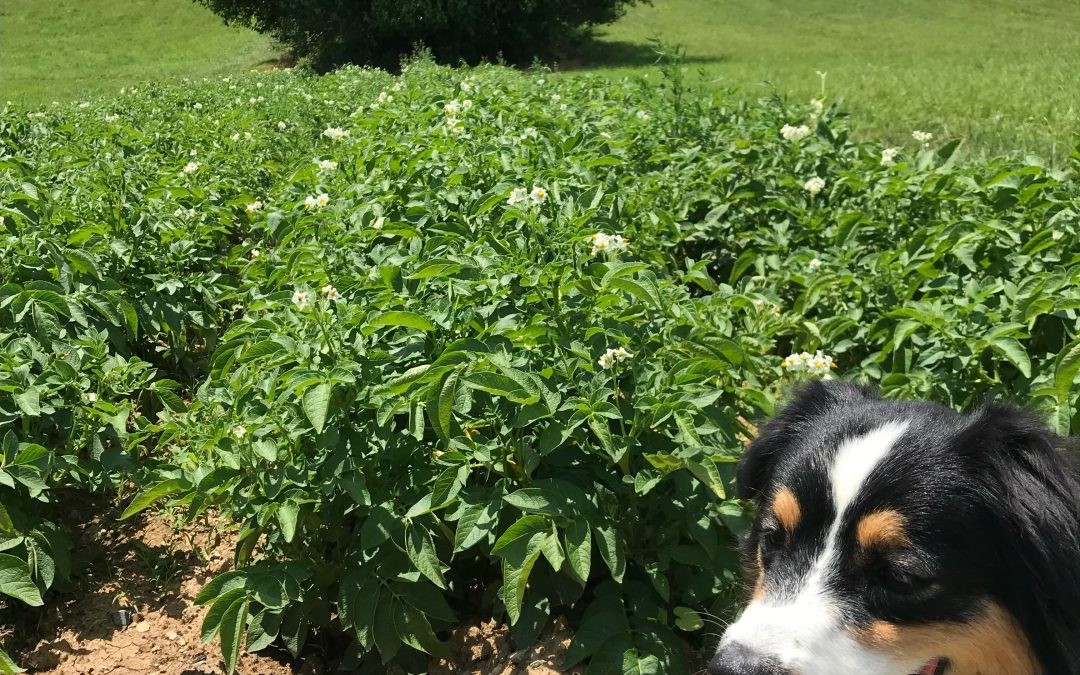March is a time of preparation on the farm – although the unusually warm weather is pushing some of this ahead this year.
Our lambs are due to start arriving April 4 so things get “back – mapped” from there. We start with stripping the sheep barn and getting it set up for the moms. The pregnant ewes (and one of our older girls) have spent the winter in the bank barn and lamb field. This allows us to keep a closer watch over them and they become reacquainted with the lambing area and having us around. Usually, we would start supplementing their feed with some grain around 5 weeks prior to lambing as 70% of the lamb growth occurs during the last month of pregnancy so the ewes need more nutrition. Also, as the lambs get bigger there is less room in their rumen for bulkier forages, so they need more concentrated feed. However, given the very early green grass growth this year we may need to modify that. “Over conditioned” (i.e. – fat) ewes are much more prone to issues with lambing.
We have trimmed the feet of all the sheep and will also be doing our pre-lambing shearing. There are several reasons to shear the sheep before lambing. It makes it easier for lambs to nurse; keeps everyone cleaner; and it is easier to observe what is going on with the ewe. Additionally, a shorn ewe will be more apt to seek shelter with her lamb in bad weather. We also update vaccinations at the same time. This provides a time frame for optimal antibodies to develop in the ewe’s colostrum for the lambs.
Usually a cold rainy-day project, we will take advantage of the warm weather to go through lambing supplies and order anything we may need. We also order ear tags for the lambs. We try to use different color tags for different years. It makes it easier to tell from a distance which sheep was born which year. Likewise, we tag the ram lambs in the right ear (R = Ram) and the ewe lambs in the left ear. This is also a good time to catch up on the latest research and webinars. The warmer weather has also provided a good window for skirting fleeces in preparation for the Maryland Sheep and Wool Festival and to send to the fiber mill.
We have had our maple sap buckets up since Valentine’s day this year and have collected quite a bit of sap already. The flow of maple sap will start to diminish as the nights get warmer. Below freezing nights and sunny days with temperature above 40 degrees are ideal for flowing sap. Boiling down the sap to produce syrup is an ongoing process but this will begin to wrap up in March as well.
The hay fields were limed last year so do not need it again yet. The vegetable gardens are still dormant at this point, but planning is underway and, depending on the weather, planting may start this month. It’s always nice if we can get potatoes in the ground around St. Patrick’s Day. We have also dug a new asparagus bed. While it takes about 3 years for a new bed to become fully productive we hope to have some in the mercantile this spring. We also met during February with our colleagues at Chestnut Creek farm to plan out the vegetable selections for the mercantile for the year.
Work in the hop yard will also start up in March. Maintenance work such as straightening poles and tightening cables needs to be done. Once the hops start to emerge we will go through and ‘crown’ them. This entails taking off the early growth and disturbing the soil around them. It helps to prevent fungal diseases and to protect the plants from a late freeze die off of the growing tips. Tom and Bryan Butler are also continuing to work on developing research projects and writing grants for continued work on the Monocacy hop. Researchers from Cornell University have also reached out and will be joining the work.

